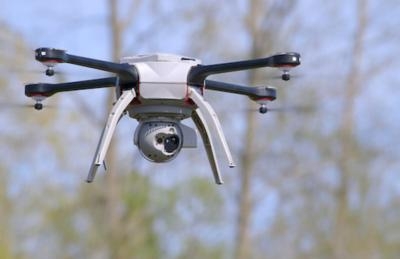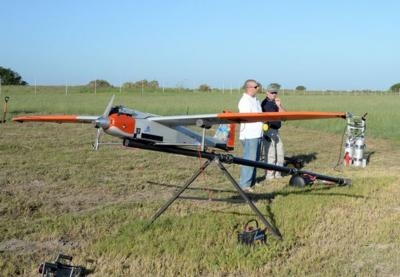Association To 'Undertake A Detailed Analysis' Of The New Part 107
The NBAA has issued a statement welcoming the release by the U.S. DOT and FAA of a notice of proposed rulemaking (NPRM) towards adopting a regulatory framework governing the commercial operation of small unmanned aircraft systems (s-UAS) weighing less than 55 lbs.

The NPRM proposes to regulate non-recreational use of s-UAS under a newly created Part 107 of the Federal Aviation Regulations (FARs).
"NBAA has long maintained that any plan to integrate UAS into the National Airspace System be thoughtful, deliberative and focused on safety," said Bob Lamond, NBAA director, air traffic services and infrastructure. "The FAA has taken a good first step in releasing these initial guidelines to provide a much-needed regulatory structure for these operations."
The NPRM was also welcomed by House Transportation Committee Chair Bill Shuster (R-PA). “The FAA’s proposed regulation on small UAS is a positive first step," Shuster said in a statement. "We need to properly balance safety, privacy, and access while ensuring the United States remains at the forefront of aviation technology. As we continue to review this proposal and as the FAA finalizes the rule, I look forward to hearing reactions and input from all stakeholders.”
Among the proposed requirements is that s-UAS flights would be limited to less than 500 feet above ground level in daytime only, visual conditions, with the operator or a visual observer maintaining non-technologically-aided line-of-sight with the s-UAS at all times in order to assure safe operations and to see-and-avoid manned aircraft.
The agency would also require s-UAS operators to pass an aeronautical knowledge exam and obtain an FAA UAS operator certificate, with biennial reexamination in line with recertification requirements for pilots of manned aircraft.
NBAA has long maintained that it is imperative that any introduction plan for UAS be focused on safety. This means UAS should not share the same airspace with manned aircraft until they have equivalent certification and airworthiness standards as manned aircraft, including the ability to take timely directions from air traffic control, and to sense and avoid other aircraft and UAS.
"The FAA believes that a high level of safety can be achieved under the proposed requirements and the rule will enable the opportunity for the private sector to conduct research and development for commercial small UAS businesses, adding an economic benefit to the U.S.," Lamond added. "NBAA will undertake a detailed analysis of the actual rule, and provide comments back to the FAA, to continue to ensure safe integration of s-UAS into the NAS, while allowing for the greatest commercial viability of s-UAS."

To assist business aviation stakeholders with understanding the requirements for s-UAS operation, NBAA recently launched a dedicated web resource for Members, organizing the latest news and information related to the Association's efforts toward the safe operation and integration of UAS. Review NBAA's UAS resource in its entirety.
Potential business aviation uses for s-UAS have also been the focus of sessions held during NBAA events, including an upcoming meeting scheduled for 3 p.m. MST on Tuesday, Feb. 24 to be held in conjunction with the NBAA Leadership Conference in Tucson, AZ. NBAA has recently made UAS integration a part of the association’s major events. Learn more about a session at NBAA’s 2014 Business Aviation Convention & Exhibition that focused on UAS.
In January 2015, NBAA also joined with other aviation advocacy groups and industry partners in support of the "Know Before You Fly" educational initiative to provide prospective users with the information and guidance they need to fly UAS safely and responsibly. Learn more about NBAA's support for the Know Before You Fly program.
In addition to the forthcoming NPRM, today the White House issued a presidential memorandum on governmental use of UAS in the National Airspace System, calling for federal regulators to work with industry stakeholders on developing a framework for privacy, accountability and transparency issues concerning commercial and private UAS use.
(Images from file)
 NTSB Prelim: Piper PA-23
NTSB Prelim: Piper PA-23 Classic Aero-TV: One Mans Vietnam
Classic Aero-TV: One Mans Vietnam NTSB Final Report: Capella Aircraft Corp FW1C50
NTSB Final Report: Capella Aircraft Corp FW1C50 Classic Aero-TV: Timber Tiger Touts Curtiss Jenny Replicas
Classic Aero-TV: Timber Tiger Touts Curtiss Jenny Replicas ANN's Daily Aero-Term (07.04.25): Performance-Based Navigation (PBN) [ICAO]
ANN's Daily Aero-Term (07.04.25): Performance-Based Navigation (PBN) [ICAO]




